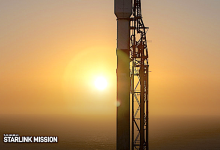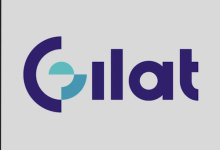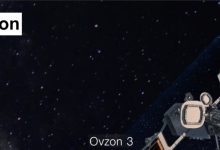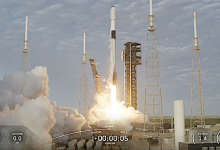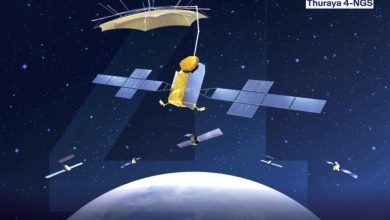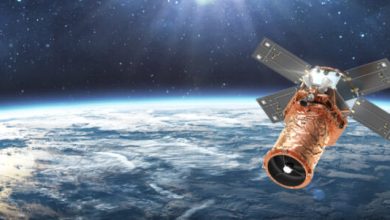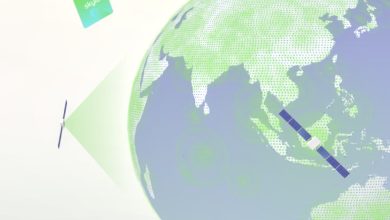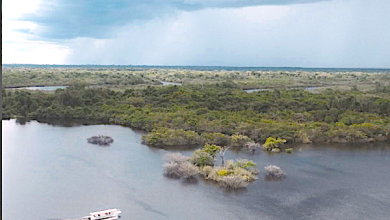First data from Beyond Gravity’s new radio occultation instrument for Europe’s weather satellite
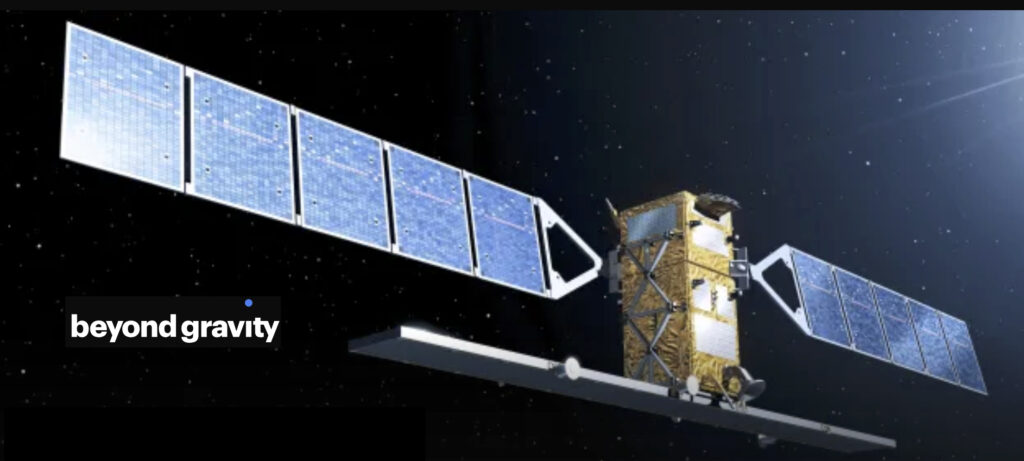

The first weather data from ’s next generation radio occultation instrument for a new European weather satellite reveal how the instrument enhances future weather forecasts.
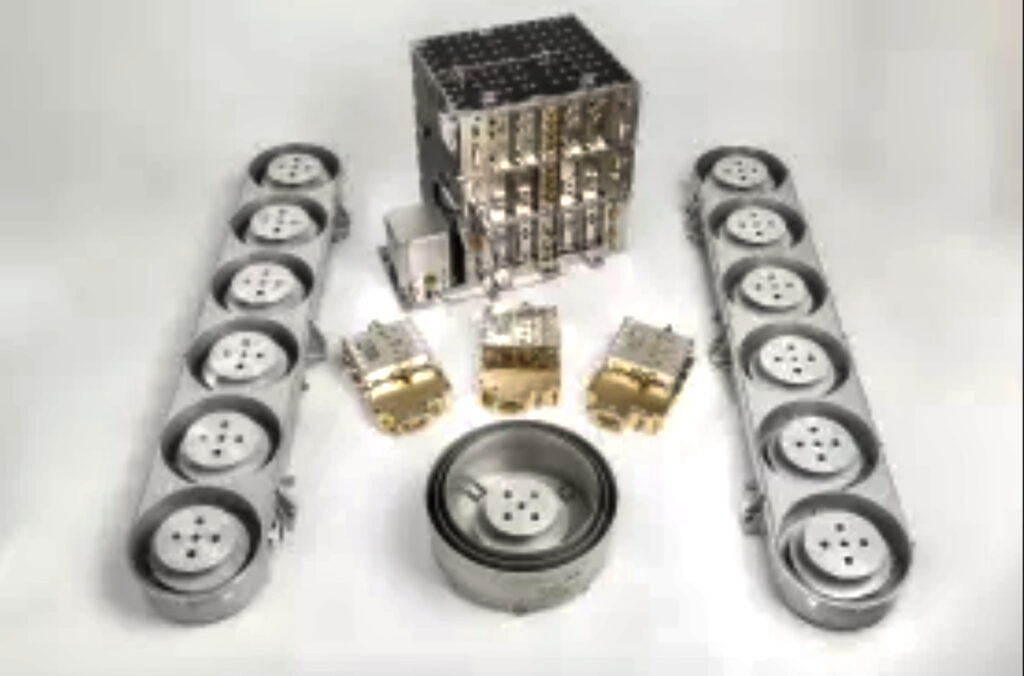
Mid-of AugUnited Statest, the first of a new generation of polar-orbiting European weather satellites was launched into space. The weather satellite will measure humidity and temperature as well as aerosols and has now sent its first preliminary data. Radio occultation instrument contributes to better weather forecasts.
A key element of this mission is Beyond Gravity’s radio occultation instrument. In addition, Beyond Gravity provided to prime contractor, in TouloUnited Statese, the satellite’s primary structure and thermal insulation

To , multiple products were provided for the launcher. The MetOp Second Generation satellite lifted off from Europe’s Spaceport in French Guiana aboard the European launch vehicle Ariane 6. Radio occultation instrument provides important weather data.

Beyond Gravity’s radio occultation instrument will fly on all six . Radio occultation in space measures how radio signals from satellites bend as they pass through Earth’s atmosphere, helping understand weather, climate, and atmospheric conditions.
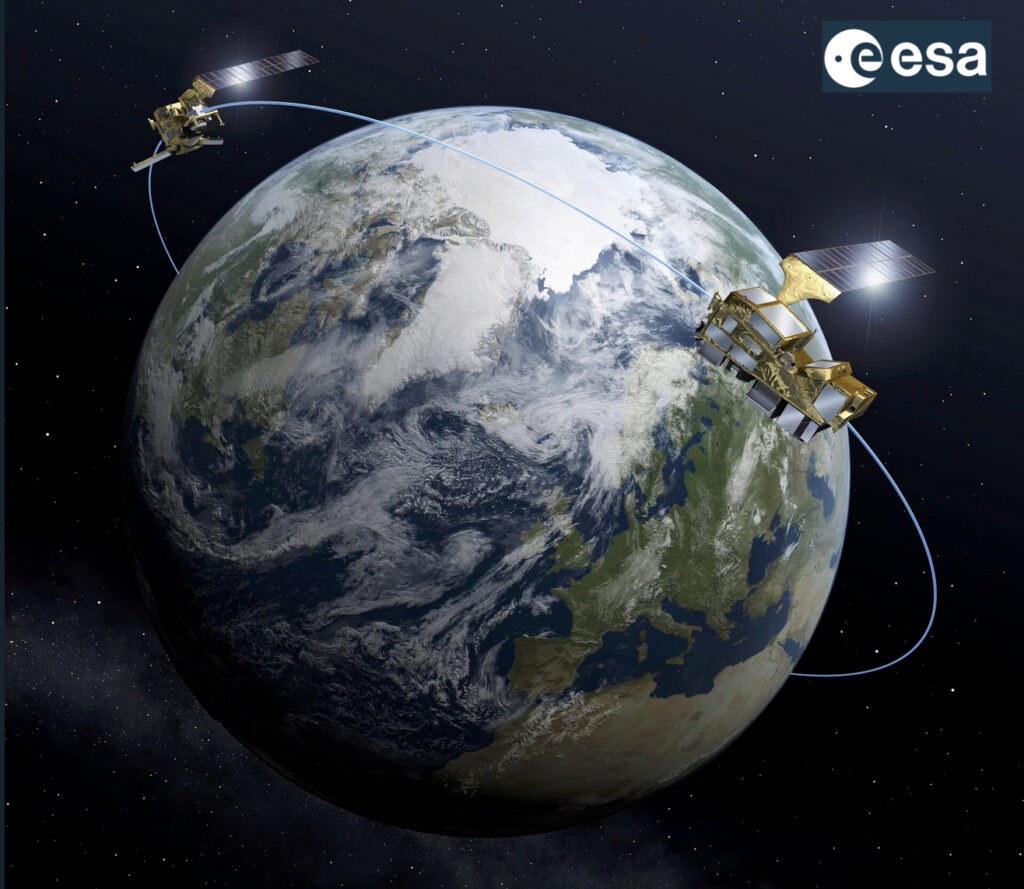
European Metop weather satellites have been orbiting the Earth from the Pole to the Pole since 2006. MetOp-Second Generation A1 will join the existing two Metop weather satellites of the first generation already in orbit*. The MetOp-Second Generation satellites will ensure the continued global observations from polar orbit. In the coming years the further five Met-op-Second Generation satellites will be launched. With climate change driving more frequent and severe extreme weather events, precise and timely weather forecasting has never been more critical.
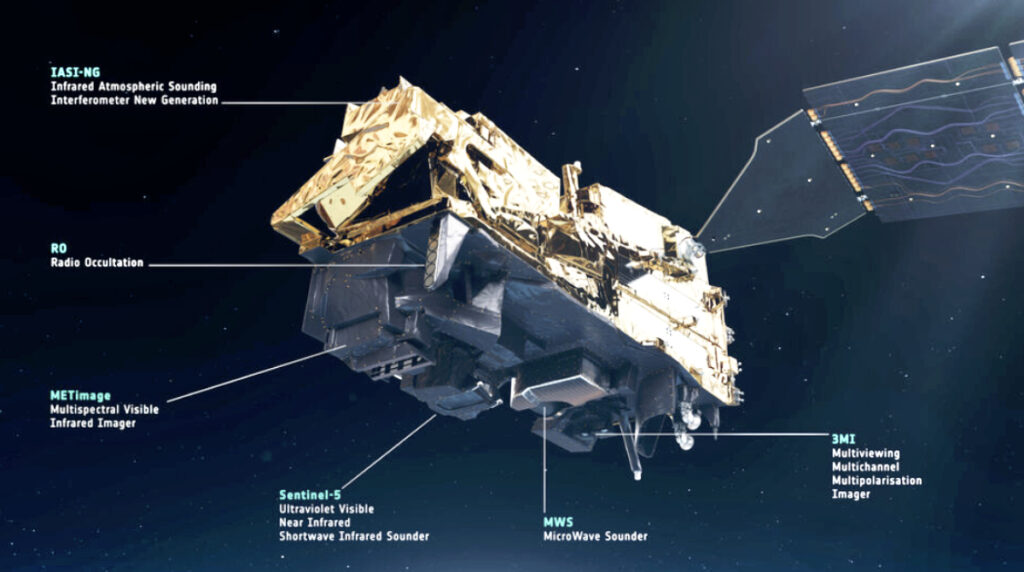
Europe’s weather-monitoring system is based on a dual-orbit strategy, with one satellite constellation in polar orbit and another satellite constellation in GEO. Having satellites in polar orbits and geostationary is key to accurate weather forecasting.
The Metop weather satellites orbit Earth from pole to pole and at an altitude of 832 km. They can provide data on global coverage every few days and make detailed observations. The other European weather satellites, the Meteosat satellites, hover much higher, at 36,000 km above the equator in GEO. From there, those satellites can monitor rapidly evolving events (e.g. hurricanes) for now-casting and short-term weather prediction. However, being fixed above the equator means that some parts of Earth are never viewed.
Beyond Gravity already provided its radio occultation instrument for the first generation of Metop weather satellites. Selected by Europe for radio occultation (RO) sounding, the company’s instrument will provide RO data until 2050.
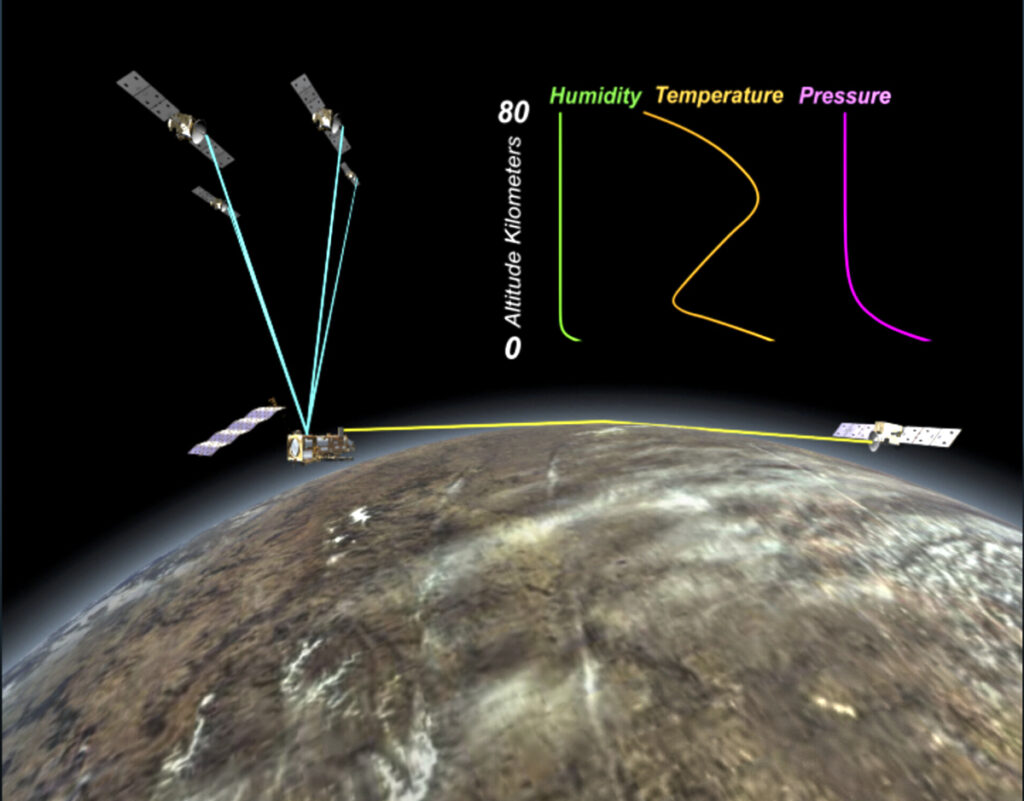
Image is courtesy of ESA.
Our radio occultation sounder instrument will provide atmospheric temperature and humidity measurements that will be highly beneficial to weather predictions and climate monitoring. Our technology will enhance Europe’s weather forecasting capabilities for years to come with an extended number of soundings, and continuoUnited States global coverage,” said Oliver Grassmann, Executive Vice President Satellites at Beyond Gravity. “The new data from our world-leading radio occultation instrument will contribute to better weather forecasts in the future. Our radio occultation instrument provides cross-sections of our atmosphere’s humidity and temperature around the globe. This instrument is an important step within our payload and data strategy. This new European weather satellite, together with its five future satellites, will significantly enhance weather forecasting accuracy and climate change monitoring.”
*The first generation polar-orbiting weather satellites Metop-B (launched September 2012) and Metop-C (launched November 2018) operate at an altitude of 817km. Metop-A, the first satellite in this series, was deorbited at the end of 2021.
